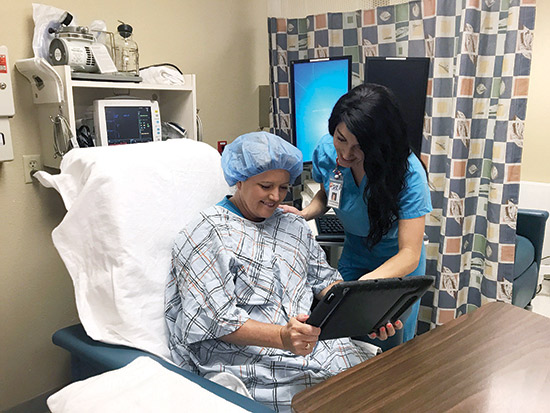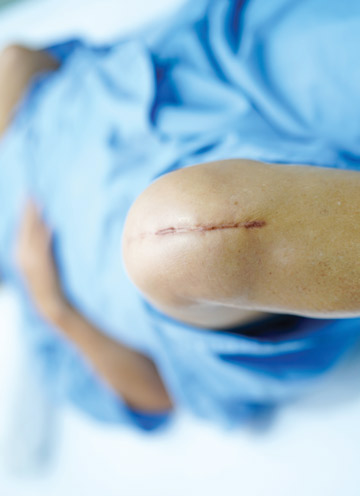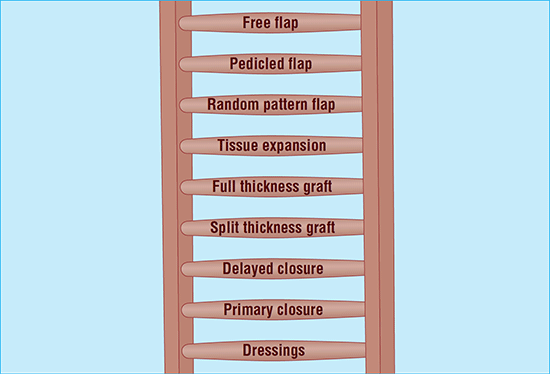Calmer, more informed patients are better equipped to handle their wounds before and after surgery.
 TOTAL CARE Wound healing obviously requires care for the physical incision, but it also can be enhanced by attending to the patient's psychological needs.
TOTAL CARE Wound healing obviously requires care for the physical incision, but it also can be enhanced by attending to the patient's psychological needs.
Pain management and wound healing are tightly bound. Recent studies address the reality that managing patients' pain from surgical wounds means managing and mitigating their mental pain, too.
According to an article in the Wounds journal, "Analgesic requirements as well as patient-centered and clinical outcomes can be affected by psychological interventions as explored by considerable research." The menu of psychological interventions comprises the following:
- Procedural. Telling patients about the wounds that will result from their surgery
- Sensory. Describing how the wound will feel
- Behavioral. Telling patients what to do to facilitate recovery
- Cognitive. Coaching patients how to think more positively about the wound
- Relaxation. Systematic muscle relaxing and/or breathing techniques
- Hypnosis. Suggesting changes in patient perceptions
- Mindfulness. Techniques based on meditation or contemplation
- Emotional. Methods of coping with wound-related stress
- Patient-generated narratives. Seeing the patient's pain through their eyes, not the providers'.
The journal examined two recent systematic reviews that explored whether psychological interventions improve patient experiences or clinical outcomes for surgical patients. The first examined studies published from 2000 through 2019 that applied psychological interventions to adult patients scheduled for elective abdominal or urologic surgery, and measured pain and/or anxiety outcomes. The researchers concluded perioperative psychological interventions were effective in improving patients' anxiety, distress and pain, and that it is realistic to apply them perioperatively during abdominal or urologic surgeries.
The second reviewed the effects on postoperative outcomes of psychological preparation of adult patients planning to undergo elective surgery under general anesthesia. Unlike the first study, these researchers didn't believe the evidence they found was of high enough quality to make a definitive statement. They concluded that psychological interventions may improve post-op pain, behavioral outcomes, anxiety or distress, but based on the evidence they could only positively say that interventions are unlikely to harm patients.
Author Laura Bolton, PhD, concluded the two reviews "suggest the merit of psychological interventions in reducing pain, anxiety, distress and opioid use following surgery," but that the data still isn't robust enough to quantitatively assess its efficacy, and that there still hasn't been enough investigation of how the interventions work in conjunction with pain medications.
"Perioperative psychological interventions may trim hospital stays and help improve surgical pain, analgesic use, anxiety, depression and functional activities of daily living," wrote Dr. Bolton. "There will be definitive confirmation once studies standardize measures documenting these postoperative outcomes. Imagine the strides that could be made in advancing wound practice and science if the same clinically relevant, reliable, valid terms and measures to document wound care outcomes were used."
Even though the data isn't quite there, it's clear that employing all or some of the interventions listed above can contribute to a better patient experience, and might already be part of the patient experience at your facility.
.svg?sfvrsn=be606e78_3)



.svg?sfvrsn=56b2f850_5)